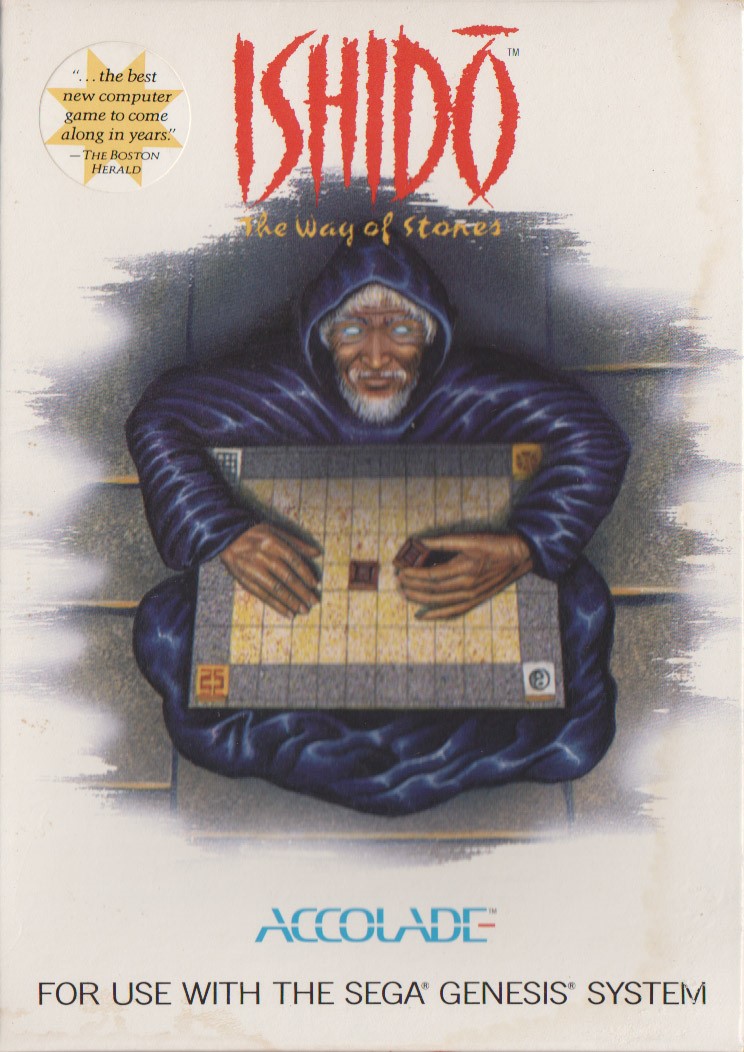
PLAYERS: 1
PUBLISHER: Accolade
DEVELOPER: Accolade, Publishing International
GENRE: Puzzle
RELEASE DATE: 1990 – (US)
One’s first response to a game after five minutes of play should not be “What is my life?” Alas, such is the way of Ishido: The Way of Stones, a tile-shuffling puzzle board game so boring, I wondered if I was playing it wrong.
After a brief intro screen, Ishido ushers you immediately to its magical game board. There are three different board layouts to choose from, each with its own background and tiles with various symbols. At each of the board’s four corners lies a tile with a symbol in the middle. In the center of the board are two more tiles, each with a different symbol than the corner tiles.
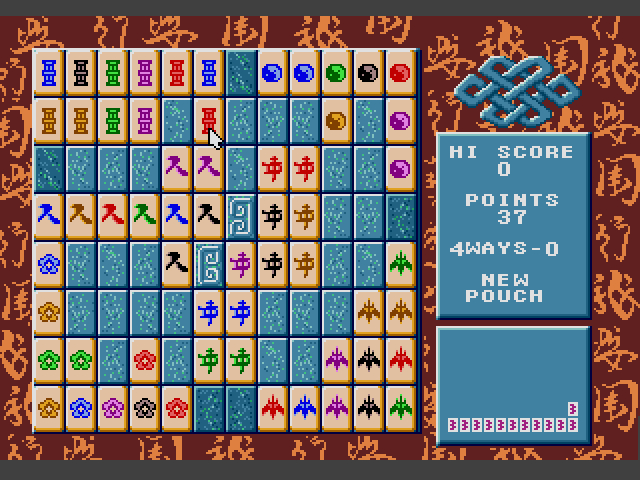
You have a pouch filled with 72 tiles, each containing one of the board’s six symbols in a variety of colors, each crying out to be placed on the game board. The goal of Ishido is to match tiles (“stones”) of either the same color or symbol next to each other and empty your pouch completely. Let’s say your next tile is a green star. You can place this tile next to the default star tile already on the board or you may place the tile next to a tile with a different green-colored shape. The move is acceptable either way.
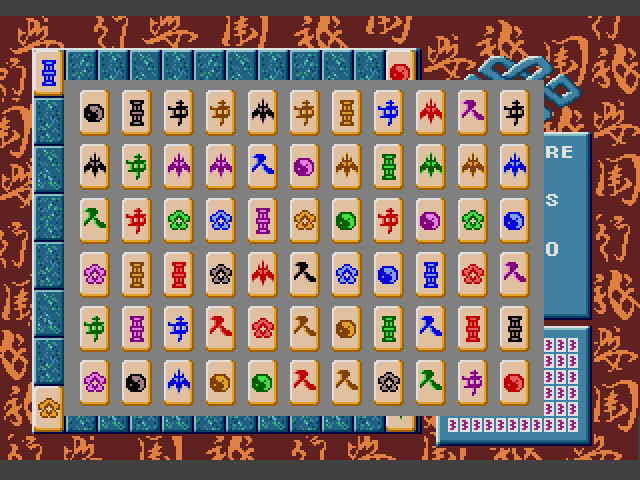
There’s a variety of different 2-way, 3-way, and 4-way move combinations that you can do. The more complex your move, the more points you’ll receive; the game even tallies the amount of 4-way moves you accomplish on the right hand side of the screen, signifying that, hey, they’re really important for some reason. I tried a couple of the challenging move examples shown in the manual, remarked “Well I’ll be, it worked,” then proceeded to empty my pouch without any further brain strain.
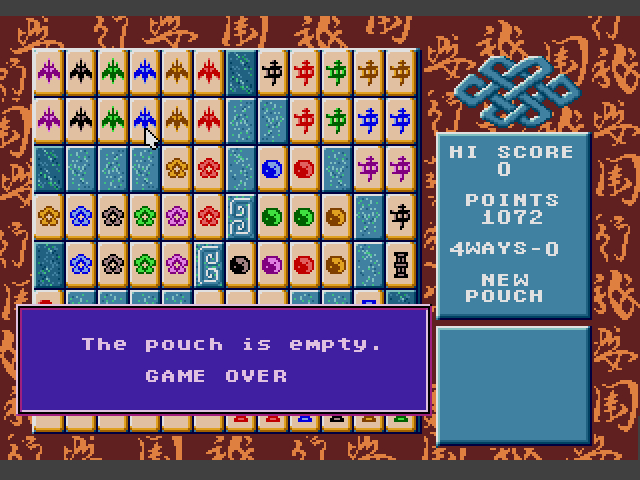
Ishido wants you to be so excited about its simple concept, that you willingly exercise your brain to come up with more complex moves. The game’s freedom in how you rid yourself of the tiles is its supposed gift to the player. The only problem is, however you end up shuffling these tiles around, the concept does not intrigue beyond a game or two. And, no matter how much brain power you use, the result is always the same: an empty pouch, with a varying amount of points.
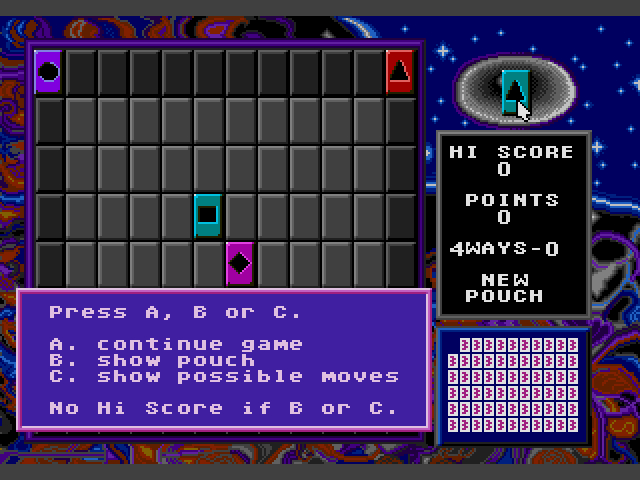
Ishido also self-aggrandizes to an absurd degree. The game came with a 27-page booklet upon release titled “The Way of Stones,” a mythology revolving around the game and the different people who mastered its ways (there’s a bit more to it than that, but I couldn’t bear to read the whole thing). The booklet is fictional, but according to Wikipedia, it convinced some that Ishido was a lost ancient game that had been rediscovered and adapted to gaming computers and consoles. Pity them and their lost dollars.
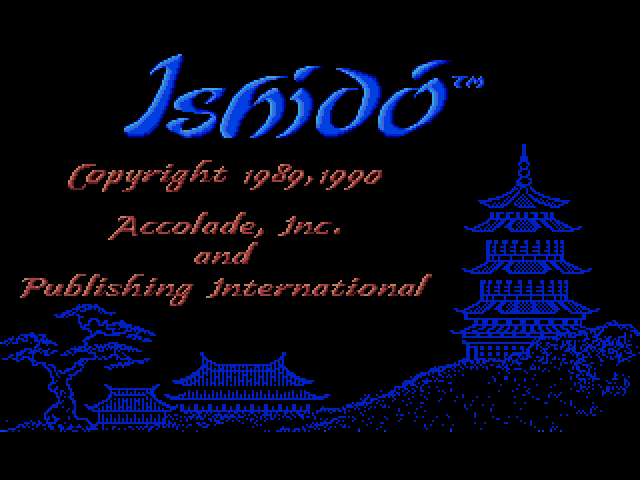
Ishido‘s booklet is brilliant from a marketing perspective, but the game fails to earn its well-developed (and ridiculous) backstory. The best puzzle games, whether they be tile-based, falling-block, or any other kind, carry an addictive simplicity: easy to start, tough to master, gripping enough to keep playing. I couldn’t wait to put Ishido down. I had no desire to learn the game’s subtleties, and I wasn’t compelled to play it more, hoping that it might hook me upon replay. Perhaps there’s some hidden greatness amidst all the nothing-to-see-here tile shuffling, but from where I’m sitting, The Way of Stones is a meaningless one.
D-
A BRIEF HISTORY LESSON
Ishido is remembered more today for its place in the landmark Sega v. Accolade case than for its riveting gameplay. The abridged version: rather than pay Sega expensive licensing fees, Accolade programmed their Genesis cartridges to override the console’s security lockout system. Ishido was the first of a handful of unlicensed games that Accolade released from 1990 to 1992. Naturally, once Sega found out, they took Accolade to court on October 31, 1991. The results? Sega instituted their Trademark Security System (or TMSS) in all future models of the Genesis (including later revisions of the Model 1), and Accolade had to remove all of their unlicensed Genesis games from the market. Some of Accolade’s games, like Winter Challenge, would be re-released with a Sega license. Ishido, however, did not receive a re-release, which means the cartridge is only playable on an early Model 1 Genesis.

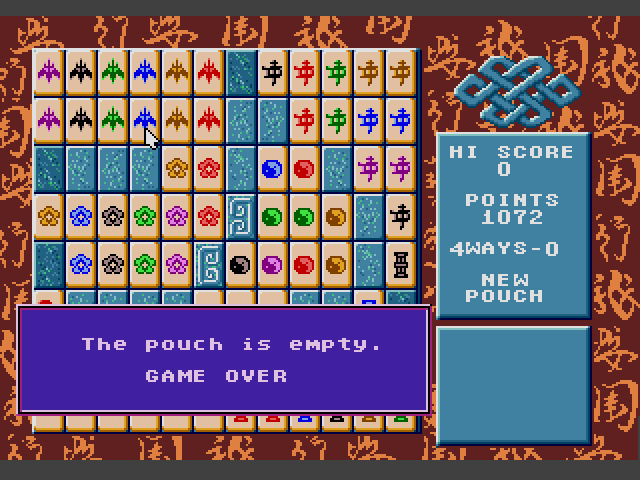
2 replies on “Ishido: The Way of Stones (Genesis, 1990)”
I found this the other day in my collection, I bought it back around 2003 when they were virtually giving away Megadrive games as quick as they could with their big bulky boxes that were terrible for transportation as the new breed of console had nice compact jewel cases that took up a fraction of the space.
I had heard that this game only works on certain Megadrives and it came up on Ebay for around eight pounds, this guy had about fifty or more of them that he couldn’t shift.
So I kept it new and sealed with the old ‘this will be worth a fortune in years to come’ at the back of my mind and then I looked on ebay and there was a copy of it going new and sealed for around the tenner mark – so much for that idea although my sealed copy of Comix Zone should be worth a bit more I would hope.
So I am sorry for the long winded story as I have never played the game but it looks pants anyhow, maybe one day on an emulator I may get the chance, although being a collector emulation is not my thing as I get my kicks from the real thing.
You could watch a Youtube video and get the gist of Ishido. You’re not missing anything.